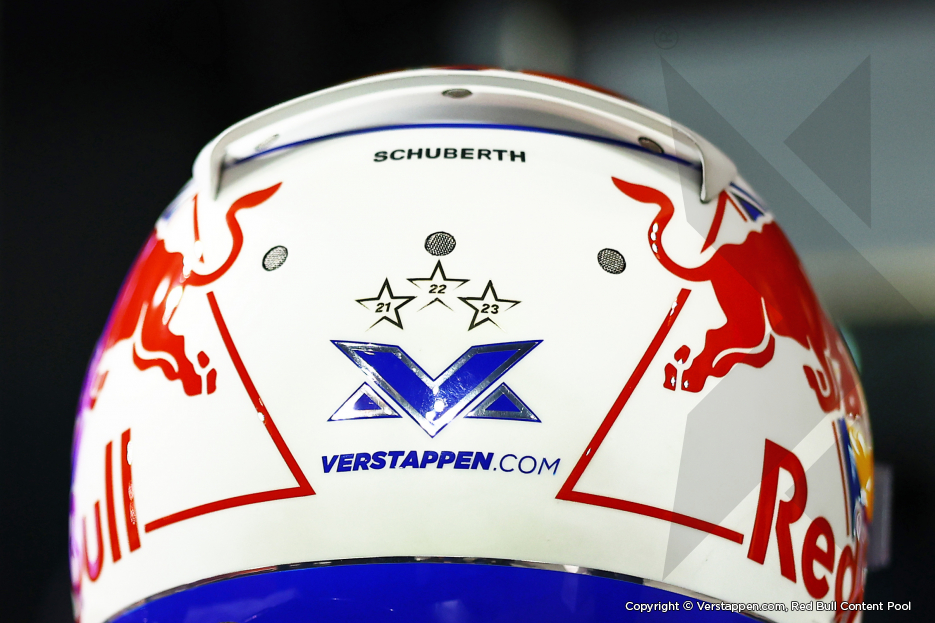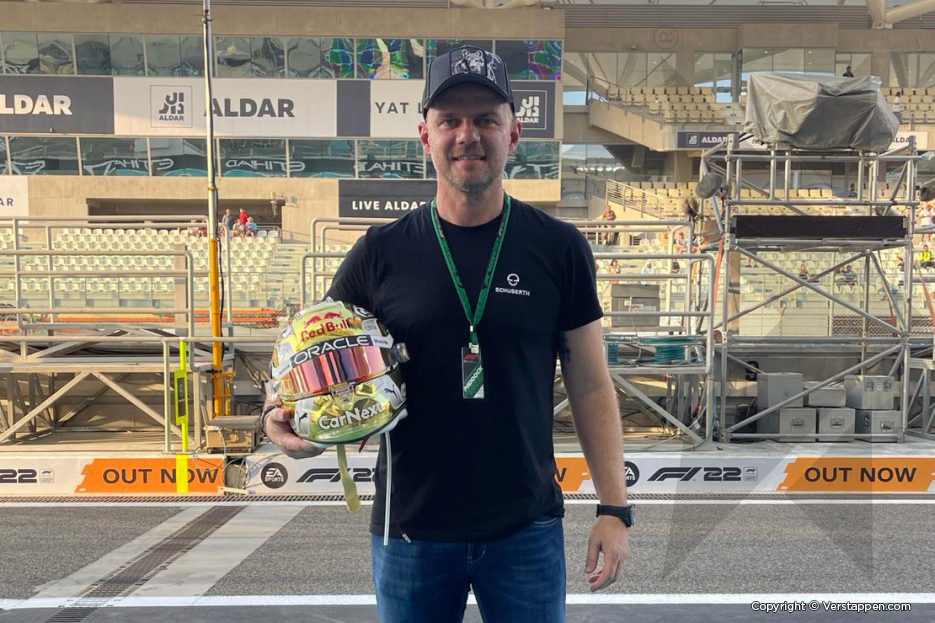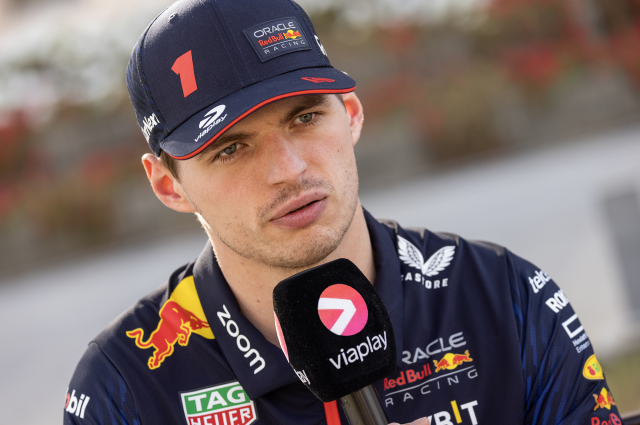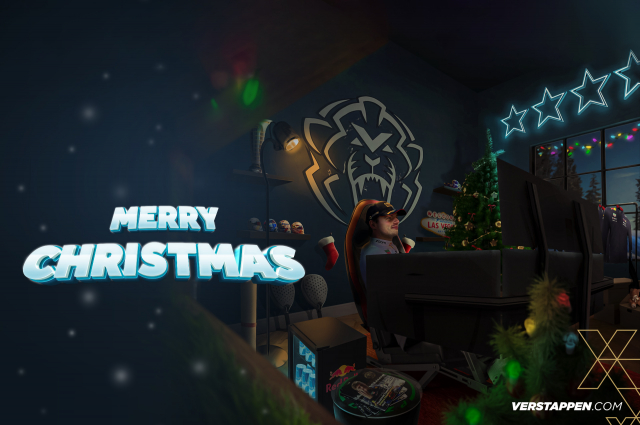No headache for Max thanks to Schuberth Performance
Published on 12 March 2024 by FORMULE 1 Magazine
For years, Alberto Dall’Oglio has been a welcome guest at Formula 1. The Italian CEO of Schuberth Performance, a sister company of Schuberth, that makes the helmets of, amongst others, Max Verstappen, does not travel to all Grands Prix by a long shot. But where he goes, the welcome is invariably warm.
“In 2019, it all started here in Barcelona”, Dall’Oglio points around him in the paddock of the Spanish Circuit de Barcelona-Catalunya, where he is with Sven Krieter, the man responsible for preparing Verstappen’s helmets on behalf of Schuberth. But actually we have to go back ten years further in time to understand Schuberth’s success. To 2009 and Felipe Massa’s bad accident at the Hungaroring. The Brazilian was hit in the head by a detached spring from Rubens Barrichello’s car during qualifying for the Hungarian Grand Prix. Massa survives, but the FIA decides to make helmet safety a spearhead of new policy.
Spare helmets
After years of research, a new standard will be introduced from 2019. Schuberth is on the deal and Dall’Oglio will travel to Barcelona in February with a boot full of new helmets for the winter test. “I told Sven that we should bring some spare helmets”, Dall’Oglio says. “I just felt something was going to happen.”
And indeed, Arai has problems getting some of its helmets through the test, so Verstappen cannot drive with his own size. He still drives with an old Arai helmet in the first week with permission from the FIA, but in the second week of testing he switches to the Schuberth. “And now we are four years and three world titles on”, ponders Dall’Oglio. “We have had a huge boost in those years, of course especially after that first world title. Not only through manufacturing the racing helmets themselves, but also through the merchandising that comes with it.”
Schuberth is having Verstappen’s scale model helmets made in-house in Thailand, providing the manufacturer with a nice alternative source of income, especially since the drivers will be allowed to use unrestricted special editions again from 2020. ‘It is a very rewarding business, also because we can do it at a very high-quality level”, says Dall’Oglio. “Max is doing his bit for the promotion and he has a fantastic team behind him that is hugely proactive. Of course there were always miniatures, but what we are doing together with Max is unique. Together with Max’s designer and team, we work four months ahead. If Max finally says ‘OK, I like it’, then we can start production and release the helmets on the same day as the day the special edition is unveiled.”
That the sale of mini helmets is lucrative is clear. Yet that is not what it is all about, says Dall’Oglio. “The most important thing for us is the satisfaction Max has. He is really happy with his helmet and we are happy with Verstappen.” The Dutchman is closely involved in the development of the helmet. “He gives us really very positive feedback to improve even marginal things”, the Italian explains. “This is complicated because once the helmet is homologated, of course you can’t change much about it, but we can still improve small things that were not intended in the first place. For example, we can always improve the visor, we can adjust the ventilation or, for example, increase the distance between the nose and the visor. We are really talking about small things, but he is very, very professional about it.”
Check the 1:2 and 1:4 Max Verstappen scale model helmets, such as his 2024 season helmet: https://www.verstappen.com/scale-models/helmets
Spirited discussion
“What I like about him is that he is absolutely clear”, the Italian continues. “Max either likes something or he doesn’t like something. That’s also how we got together four years ago. He was at that test in Barcelona and didn’t have a helmet. We gave him our helmet and he immediately said, ‘I want that helmet.’ In doing so, he went against his entire team and that became a spirited discussion. The design team did not want Max to switch because the complete aerodynamics of the car were made around that other brand (Arai, ed). But he was convinced by our helmet and said he felt better cooling, that he had better visibility and could see his steering wheel while driving. So for him it was really important and he managed to convince Helmut Marko and chief designer Adrian Newey.”
Once Schuberth had Red Bull Racing’s blessing, the helmet manufacturer was far from there. “After that, we had to convince Newey and the entire aero team at Red Bull Racing that our product was good”, says Dall O’glio. “That was an intensive period. They shared their data about the car with us and we of course shared our data the other way round. We couldn’t change too many things about the helmet because of the rules, but we changed the splitter at the rear, for example, and we went from there.” Apparently, they liked the work delivered by Schubert. “A year later, we were again approached directly by Newey with a new challenge. He asked us what we could improve on the helmet. So I gave him all our data and ideas and he said, ‘I like what you’re doing, let’s keep going.’ The ultimate compliment.”





